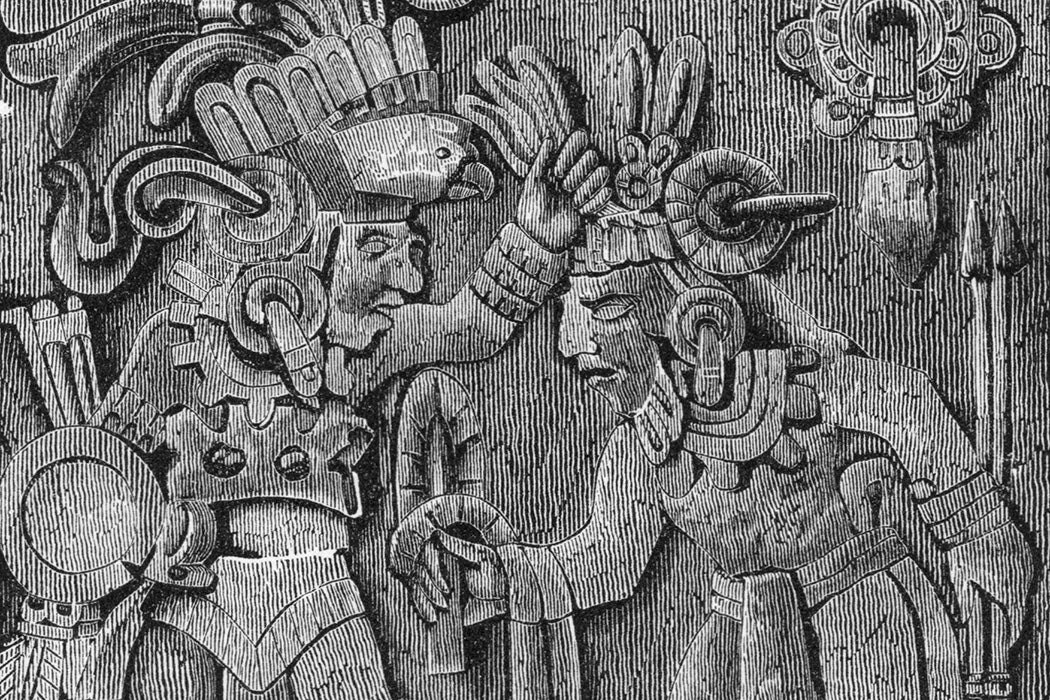Rituals in pre-conquest Mesoamerica “frequently involved sacrifices of human blood,” note Helen R. Haines, Philip W. Willink, and David Maxwell’ in their paper “Stingray Spine Use and Maya Bloodletting Rituals: A Cautionary Tale.” This often happened at key moments of transition, like “heir designation and period ending rituals.” That’s because blood helped sustain the gods. The act of giving it “opened a conduit between the natural and supernatural worlds”; the giver could enter “a physical state conducive to trances and visions.”
But the Maya took a specific tack. They favored “personal bloodletting (or autosacrifice),” considering it their rulers’ sacred duty to cut themselves and give their own blood. Burial and iconographic evidence suggests that Maya autosacrificers sometimes used stingray spines. According to Haines et al., stingrays were thought to connect “the sea with the waters of the underworld.” The animal bridged the gap between the human and the divine—much as Maya rulers wanted to do themselves. So by using the spine of the sacred messenger stingray to let out blood, a monarch would connect to the supernatural twice over.
But the spine of a stingray carried grave risks. In their examination of stingray envenomation, the authors note that the deadliest injuries can cause necrosis, especially when “foreign material originating from the sting” is not removed from the wound. No matter how careful they were when handling defleshed stingray spines, the Maya ran the risk of killing off their own organ tissue, or themselves.
Why risk one’s life, though? The authors posit that utilizing an object with the “potential for death,” or at least the potential to transform “living flesh into dead tissue,” might be seen as a “means of attaining prestige.”
Weekly Newsletter
Events using stingray spines represented moments of transition; they were likely momentous ones, important in the life of a monarch, the state, and the people being ruled. Perhaps, then, rulers only used stingray spines in situations involving “special acts of piety or in rites where the allusion to risking death was an important factor.” Maya rulers might have believed they needed to demonstrate “acts of greater devotion and, by implication, greater risks” to secure divine favor.
Furthermore, the loss of blood wouldn’t just allow “the ‘dreaming’ state sought for vision inducement,” Haines and her colleagues argue. It would also let the individual “literally teeter on the brink between the immortal world (the world of the living) and the supernatural world (death and the afterlife).” A Maya monarch would then become a mediator between human and divine—similar to the enigmatic stingray itself.
Support JSTOR Daily! Join our new membership program on Patreon today.







